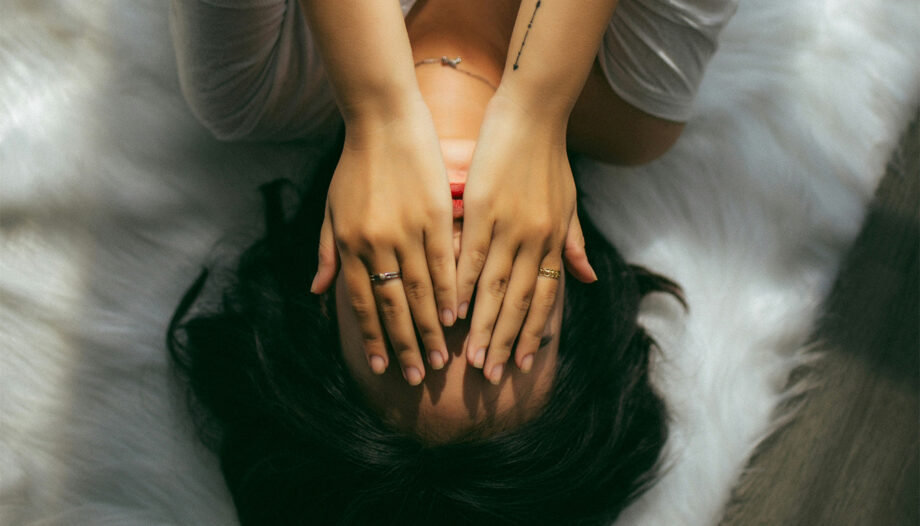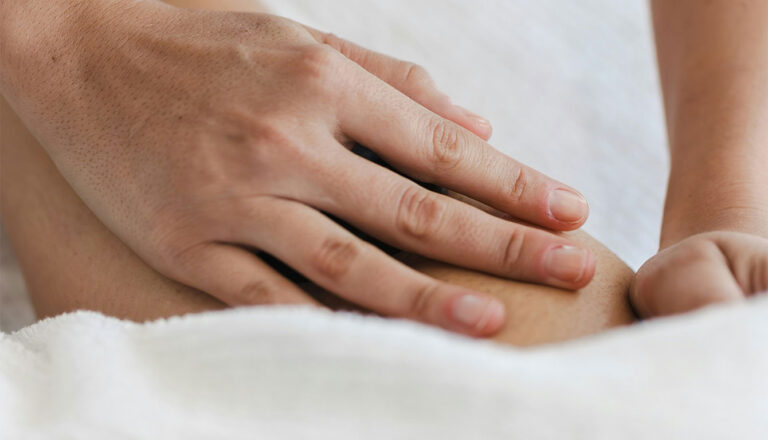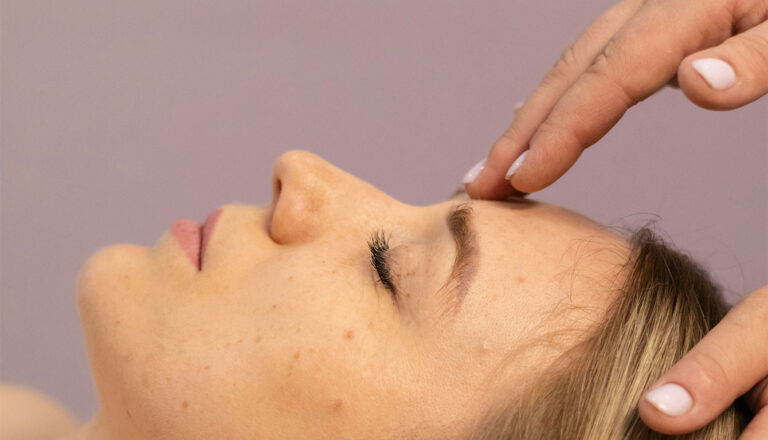This practical guide shows exactly which spots on the body to target for fast, gentle stress relief and how to fit simple routines into your day.
Small studies and recent reviews suggest acupressure and self-treatment can ease symptoms of anxiety and tension for many people. Typical care for ongoing anxiety still includes therapy and medication, while these techniques act as a complement rather than a replacement.
We cover easy, evidence-informed steps for the head, temples, ears, neck, shoulders, hands, forearms, feet and lower legs. Techniques use steady, comfortable pressure, slow breathing and short timed sessions so you can use them without interrupting your routine.
Start with quick wins for the scalp and temples, move on to releasing deeper neck and shoulder tightness, then finish with grounding foot work to help settle the mind. Safety notes and brief cautions — for example avoiding certain points in pregnancy or over wounds — are included so you can feel confident trying these methods at home.
For reflexology options and therapist choices, see a short guide on finding a specialist near you.
Key Takeaways
- Acupressure and self-treatment can offer quick, short-term stress relief alongside formal therapy.
- Target head, neck, shoulders, hands and feet with steady pressure and slow breaths.
- Use brief sessions you can repeat through the day for ongoing benefit.
- Follow simple safety cautions, especially during pregnancy or over injuries.
- Start with easy areas, then progress to deeper release and grounding work for best results.
How massage helps with stress relief: what to expect and what it’s best for
Short, targeted pressure sessions often bring an immediate sense of calm and reduced muscle tightness. Expect a short-lived but useful lift in mood and a drop in perceived pain after a few minutes of gentle work.
Short-term relief versus ongoing stress and anxiety
Short-term: Studies suggest acupressure and self-treatment may help with preoperative anxiety and cancer-related fatigue, producing temporary benefits. These techniques are best as helpful pauses in a busy day.
Ongoing: For persistent worry or chronic conditions, use these methods alongside professional therapy and medical care rather than as a replacement.

Key benefits: relaxation, pain relief, and better sleep
Typical benefits include softer muscles, easier movement, improved circulation and better sleep. Regular practice across key areas increases cumulative gains.
- What to expect: calm during and after sessions, less tension and milder headache symptoms.
- How it helps: lowers muscular guarding and reduces perceived pressure in sensitive tissues.
- Practical tips: sessions are brief, adapt pressure with fingers or simple tools, and combine slow breath cycles for best effect.
Safety first: when self-massage is suitable and when to seek help
Not every sore spot is safe for home treatment. Simple self-care suits mild, everyday tension in most people. Yet some conditions need more caution or professional input.
Who should avoid certain techniques or pressures
Avoid pressing over fractures, burns, healing wounds, areas with active infection, or severe osteoporosis. Do not apply firm pressure if there is suspected DVT or severe thrombocytopenia. If you take anticoagulant medication, use very light pressure or skip work on vulnerable regions.
When to speak to a GP or licensed massage therapist
Stop if pain sharpens or begins to radiate; treatment should feel easing, not aggravating. Allow time for tissues to settle after intense training and avoid strong work right after an acute strain.
If anxiety or insomnia affects your work, relationships or sleep, consult a GP or a therapist for a broader plan. A licensed massage therapist or massage therapist can assess risks, adjust pressure and build safe at‑home routines that complement existing therapy.
- Pregnancy note: avoid acupressure points such as Shoulder Well (Jian Jing) and Union Valley (He Gu).
- When unsure, a quick call to your GP saves time and helps pick the safest approach.
where to massage to relieve stress: quick-start guide to key body areas
Begin by using fingertips on easy targets; short sessions tend to work best. Pick one accessible area and spend a little focused time. Use hands or simple tools like a tennis ball or foam roller for deeper spots.
Gentle pressure, circular motions, and ideal timing in seconds and minutes
Apply gentle pressure and use small circular motions for about 30–60 seconds on each spot. For acupressure points, hold steady for a few seconds then release.
- Use your hands to get started: temples, scalp base, neck base or foot arches.
- Aim for short, focused minutes per region — two to five minutes works well.
- Combine glide, press‑and‑hold and tiny circles to match different tissue depths.
- When using tools, keep rolls slow and controlled; avoid quick or jerky movement.
How to breathe and position your body for best results
Synchronise touch with breath — inhale through the nose, exhale slightly longer through the mouth. This simple breathing pattern amplifies the calming effect of pressure.
Sit tall or lie with support under the neck. Rest elbows on a table if that helps keep shoulders relaxed. Finish each mini‑session with a gentle head turn or shoulder roll to notice any change in ease.
Head, temples and ears: self-massage techniques for tension and headaches
A brief head routine can ease tight forehead muscles and ease a mild headache. Use slow breaths and comfortable pressure. Begin upright and support your arms so your hands feel light and steady.
Scalp and temple circular motions
Place your fingers lightly on each temple. Make small circular motions for about 60–90 seconds. Then sweep fingers across the scalp from front to back to release surface tension.
Try the Hall of Impression (Yintang): rest your index finger between the eyebrows and apply gentle, steady pressure for 5–10 minutes with slow, deep breaths. This point often feels settling and helps calm a busy head.
Ear relaxation and upper shell work
Find Heavenly Gate (Shen Men) in the ear’s triangular hollow. Use small, slow circles for about two minutes. Alternate sides to keep balance and keep overall pressure low to avoid soreness in delicate cartilage.
- If a pounding headache links with a tight shoulder, add a light press on Shoulder Well briefly, but avoid this point in pregnancy.
- Combine a short temple press, scalp sweep and ear point for a compact routine that fits in a busy day.
- Keep the jaw relaxed and unclench the teeth; this often speeds relief.
Note: Acupressure points may help temporarily; effects are short lived and complement other care.
Neck and shoulders: releasing muscle tension at home
A brief home routine for the upper neck and shoulder area can improve movement and blood flow. Start by lowering the shoulders and lengthening the neck. This sets a neutral base before any hands-on work.
Self neck massage: thumbs and fingers for tight muscles
Place the thumbs at the base of the skull and make small circular motions for 3–5 minutes. Work along the sides of the neck with fingers, keeping pressure gentle enough that it comforts rather than hurts.
If a point feels sharp or gives nerve-like zings, ease off or move a centimetre away. Use a simple pin‑and‑stretch technique: hold a tight spot with thumbs, then slowly turn the head away to lengthen the tissue safely.
Shoulder squeeze and Shoulder Well area for stress and headaches
Use the shoulder squeeze: grasp the top of one shoulder, hold for two or three breaths, then release and repeat along the ridge. The Shoulder Well (Jian Jing) can ease muscle tension and headache‑linked tightness, but avoid this point in pregnancy.
- Keep sessions brief — a few passes usually shift stiffness and improve blood flow.
- If pain worsens, stop and speak with a GP or a licensed massage therapist.
- Hydrate and move gently afterwards to support circulation and reduce soreness.
Note: Avoid deep work over the front of the neck and steer clear of bruised or inflamed areas.
Hands and forearms: Union Valley and palm work to calm the mind
Simple hand holds and short forearm presses can calm a busy mind in minutes.
Union Valley (He Gu) sits in the soft web between thumb and index finger. Use the pad of your thumb and apply steady pressure for about 4–5 seconds. Breathe slowly while repeating for a few rounds; many people report easing of headaches and neck tension.
Union Valley and index finger placement
Locate the spot by bringing the thumb and index finger together and feeling the hollow. Press with the thumb pad, then release. Keep movements rhythmic and comfortable rather than sharp.
Palm and wrist compression
Knead the centre of the palm with the opposite thumb to soften small muscles. Trace gentle circles around the wrist crease and work along the inner forearm towards the elbow.
Inner Frontier Gate and precautions
Inner Frontier Gate (Neiguan) lies about three finger widths below the wrist on the inner forearm. Steady, moderate holds here can feel grounding and may ease nausea or mild anxiety.
- Keep pressure moderate and rhythmic; easing, not pain, is the sign of correct work.
- If pregnant, skip Union Valley and similar induction‑related points; favour palm and wrist work instead.
- If you have an injury or doubt your technique, a therapist can show safe alternatives.
Tip: Use these simple points before travel or meetings to reduce feelings of stress anxiety and regain calm.
Feet and lower legs: Great Surge and foot roll for whole-body ease
A short foot routine often helps your whole body unwind after a long day on your feet.
Great Surge point for calm and sleep
Find Great Surge (Tai Chong) two to three finger widths below the junction of the big and second toes, in the hollow above the bone. Apply firm, deep pressure for about 4–5 seconds and release. Repeat on each foot; many people notice a settling effect that can aid sleep and ease menstrual cramps and mild anxiety.
Hands versus ball: simple techniques for arches, heel and forefoot
Use your hands to knead the arch, heel and ball of the foot. Pause on tender spots until they soften; this technique eases local tension and helps tired lower-leg muscles.
Alternatively, roll a tennis or golf ball under the sole for 3–5 minutes. A tennis ball gives broad relief; with a golf ball use light contact because it is harder and may bruise delicate areas.
- Work both feet for balance and focus on gritty or tight sections.
- Finish with long strokes from toes toward heel to boost blood flow.
- If sharp localised pain appears, stop and seek advice.
Tip: Add brief foot work to an evening routine. For more guided ideas on simple foot techniques, see this short guide.
Pressure points for stress relief: simple acupressure you can try
Try a few short holds on proven points when you need a quick reset.
Hall of Impression (between the eyebrows)
Hall of Impression (Yintang) sits in the small hollow between the eyebrows. Use the index finger to make small, firm circular pressure for 5–10 minutes while breathing slowly. This approach often quiets intrusive thoughts and helps people feel more settled.
Heavenly Gate (upper ear)
Heavenly Gate (Shen Men) is in the triangular hollow of the upper ear. Apply gentle circular pressure for about two minutes. This point may help evening unwind routines and can prime the body for sleep when used regularly.
Inner Frontier Gate (inside forearm)
Inner Frontier Gate (Neiguan) lies three finger widths below the wrist, between the tendons on the inner forearm. Hold for 4–5 seconds or use short repeats; this point may help nausea, pain and feelings of anxiety. Keep pressure comfortable and stop if any sharp sensation appears.
| Point | Location | Typical hold | What it may help |
|---|---|---|---|
| Hall of Impression | Between the eyebrows | Small circles, 5–10 minutes | Calming the mind, easing intrusive thoughts |
| Heavenly Gate | Upper ear triangular hollow | Light circles, ~2 minutes | Evening calm, insomnia-related tension |
| Inner Frontier Gate | Inner forearm, ~3 finger widths below wrist | Short holds, 4–5 seconds; repeat | Nausea, mild anxiety, pain modulation |
- Combine two or three points per session to address both mental tension and physical settling.
- These pressure points may help many people feel immediate relief, though effects tend to be temporary and best used alongside other supports.
- Track your response by noting time of day, point used and perceived change to personalise your routine.
Evidence summary: Small trials show promising short-term benefits — for example in preoperative anxiety and fatigue — but larger studies are needed for stronger conclusions.
Tools and routines: tennis balls, foam rollers, and creating a home spa
A few inexpensive items let you work deeper muscles safely at home. They help extend the benefit of a professional session and are handy between appointments.
Using a ball or roller for back, glutes and legs
Use a tennis ball against a wall to find upper back knots. Lean into the ball and roll slowly over a tight spot for about 20–30 seconds.
For lower back and glutes, lie on the floor and place the ball under the sore point. Adjust pressure with your legs so you do not overload sensitive tissues.
Choose a foam roller for larger leg muscles such as calves, hamstrings and thighs. Roll in short, controlled passes and pause on tender spots until tension eases.
Setting the scene: lighting, music and a few minutes a day
Create a simple home spa mood with soft lighting and calm music. A short routine of two or three self-massage techniques, done for a few minutes, fits easily into most days.
- Keep movements slow; quick rolls can irritate tissues.
- If a spot feels sharp or nervy, shift a few centimetres or reduce pressure.
- Tools complement, not replace, massage therapy; a therapist can refine technique for your body and goals.
- Finish with gentle stretches and a glass of water to support recovery.
Tip: Many people find combining hands-on work with tools gives the best balance of precision and coverage for the back and shoulder.
Conclusion
End your session with gentle, focused holds that help the body shift from tense to settled.
Choose one or two areas — a short neck massage, a few shoulder squeezes or a brief foot roll — apply comfortable pressure and breathe slowly. These small steps often ease muscle tension and give useful pain relief during a busy day.
Use fingers or thumbs for precision and tools like a tennis ball for broader back work. Keep sessions short and repeat them across the day for steady benefits rather than one long treatment.
If symptoms rise or pain lingers, check in with a GP or a licensed massage therapist for tailored care. For more on relaxation methods and how they calm the body and mind, see this guide on relaxation therapy.
Start today: try a one-minute neck hold, a couple of shoulder squeezes, light ear work and a 30–60 second foot roll. Notice what helps and build a simple, reliable routine that suits your day.
FAQ
Where should you focus touch to reduce tension quickly?
Gentle pressure on the neck, shoulders and temples often gives fast relief. Use circular motions with your fingertips on the temples, thumb pressure along tight neck muscles and kneading on the shoulder tops for a few minutes. Short, regular sessions throughout the day help more than one long session.
How does a short self-treatment differ from ongoing therapy?
Short sessions ease acute tension and lower heart rate briefly; regular treatments or sessions with a licensed massage therapist can change chronic patterns of muscle tightness, improve sleep and reduce recurring pain. Think of quick work as temporary relief and ongoing therapy as long-term management.
What benefits can I expect from simple self-techniques?
You may notice reduced muscle soreness, calmer breathing, fewer headaches and improved blood flow. Gentle hand work on the palms, forearms and feet also stimulates relaxation and can ease anxiety for many people.
Who should avoid certain self-techniques or strong pressure?
People with blood clotting disorders, recent fractures, serious skin conditions, fever or uncontrolled high blood pressure should avoid vigorous self-treatment. Pregnant people must take care around some pressure points; seek tailored advice from a GP or a licensed massage therapist before trying new techniques.
When is it important to consult a GP or a licensed massage therapist?
See a GP or a qualified therapist if pain is severe, lasts longer than a few weeks, follows injury, causes numbness or pins-and-needles, or if you have underlying health conditions. A therapist can tailor pressure, recommend protocols and ensure safe, effective care.
How do I start a quick routine at home using time effectively?
Spend 30–60 seconds per area: temples, neck, shoulders, palms and feet. Use gentle circular movements, moderate pressure with thumbs or fingers, and breathe slowly. A short routine before bed or during a break can refresh the body and mind.
What breathing and posture help make self-care most effective?
Sit or lie in a supported position with shoulders relaxed. Breathe slowly through the nose and out through the mouth, matching each stroke or circle with a breath. This encourages the parasympathetic response and increases the benefit.
How do I ease tension in the head and ears safely?
For headaches, use gentle circular strokes on the scalp and temples with the pads of the fingers. For ear relaxation, stroke the upper shell gently and avoid hard pressure. Stop if pain increases and limit each area to a few minutes.
What techniques work well for neck and shoulder tightness?
Use thumb pressure along the base of the skull and the sides of the neck, and kneading or squeezing motions on the shoulder tops. Keep movements slow and light; aim for short sessions several times a day rather than heavy pressure in one go.
Which hand and forearm points calm the nervous system?
The Union Valley area between the thumb and index finger responds well to firm but comfortable pressure. Palm compression and gentle wrist work relax forearm muscles and can reduce overall tension. Avoid deep pressure during pregnancy.
Can foot work help whole-body relaxation and sleep?
Yes. Applying pressure to the arch and the area known as the Great Surge on the sole can promote relaxation and support sleep. Rolling the foot over a ball or using hands to knead the heel and ball of the foot helps ease accumulated tension.
Which simple acupressure points are safe to try at home?
Try gentle pressure on the Hall of Impression (between the eyebrows) to calm the mind, Heavenly Gate (upper ear area) for insomnia, and Inner Frontier Gate on the inner forearm for nausea and anxiety. Use light, steady pressure for 30–60 seconds and stop if it hurts.
What does research say about pressure-point and self-massage effects?
Evidence suggests acupressure and self-massage provide promising, temporary relief for tension, pain and sleep problems. Benefits are often immediate but may not replace professional therapy for chronic conditions.
When should I use tools like tennis balls or foam rollers?
Use a tennis ball for targeted release under the shoulder blades, glutes and feet, and a foam roller for larger areas like the back and legs. Apply gentle body weight and avoid direct pressure on the spine or painful areas; short sessions of a few minutes per spot work best.
How can I create a calming home routine with tools and ambience?
Set soft lighting, play calming music and reserve five to fifteen minutes daily. Combine hands-on work, a ball or roller for tighter spots, and slow breathing. Consistency is key for noticeable benefits over time.





